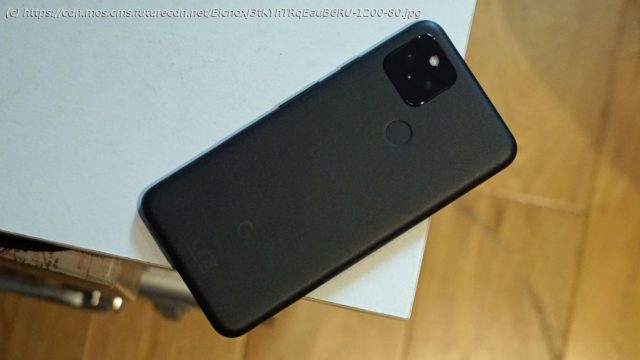The Google Pixel 5 sheds a few features to become a more affordable and compact phone that still takes great photos at a competitive price.
The Google Pixel 5 represents a strategy change for the tech giant: the phone doesn’t quite have the specs and features to compete with top-tier flagship devices, but instead is a more measured handset at a lower pricetag. Compared to the Samsung Galaxy S21 s of the world, the Pixel 5 focuses on what Pixel phones do best: offering users a great, simplified camera experience and a very clean Android interface. It’s a tack we look forward to the Google Pixel 5a continuing, and we expect to hear more about that phone – and all the Android 12 updates coming later this year – when Google IO 2021 happens in May. ‘Simplified’ could apply to the whole phone, really: it’s got an all-in-one body that curves from the back around the sides, and which is metal, so you won’t have to worry about shattering it. Google has also gone back to a physical fingerprint sensor on the rear of the phone, which is far easier to find without looking than an in-screen scanner. And with the purest version of Android 11 on board, there’s no bloatware or operating system complications. Simplified can also mean lacking, though, and Google has cut some corners in designing the Pixel 5 to drive prices down to the level of more affordable flagships like the Samsung Galaxy S20 Fan Edition and OnePlus 9. In most ways, that’s fine, but there are some compromises that keep it from feeling like an affordable slam-dunk. The Pixel 5’s chipset won’t quite keep up with the processors in the new S20 FE or OnePlus handset, and its two cameras are lacking serious zoom capability. But it’s the uniqueness that we miss, too: fans of the Google Pixel 4 ’s Soli depth sensor, which enabled in-air gestures, will be sad to see it gone. In a rare move for a phone maker, Google abandoned tech instead of iterating on it; LG did the same thing when it abandoned its own depth sensor, which it introduced on the LG V50, when it brought out the LG V60. Personally, we don’t miss Soli, though we do miss what it could have become as a uniquely Google experience. But while some cutting-edge tech has been culled, it’s not a complete regression: the Pixel 5 has wireless charging, a 90Hz refresh rate display, and 5G, while its 4,000mAh battery is a lot bigger, and subsequently lasts far longer, than the 2,800mAh battery in the Pixel 4. Ultimately, the Pixel 5 is a mixed bag, with some curious omissions in an otherwise solid phone. It’s designed to hit a sweet spot for a certain kind of consumer who’s willing to forego some flagship features to get a finely-tuned photo experience, and it does that – but it’s something that other phones, like the Google Pixel 4a 5G, which has virtually identical photo capability, offer at a notably lower price. But the Google Pixel 5 does offer something that most other flagships don’t: it feels like one of the smallest phones on the market, despite having a not-so-small 6-inch OLED display, and it can comfortably be used with one hand. With the imminent arrival of the iPhone 12 mini, however, it’s set to face some serious competition in the ‘mini flagship’ space. The Google Pixel 5 was released in the US, UK and Australia on October 15. The Google Pixel 5 price is $699 / £599 / AU$999, and it only comes in one configuration, with 8GB of RAM and 128GB storage. It’s available in two colors: Just Black and the greenish Sorta Sage. This comes in cheaper than the Pixel 4, which started at $799 / £669 / AU$1,049; although, as we’ve mentioned, that cost does come with a few compromises. The Pixel 5’s price puts it at the lower end of the flagship price range, with the Pixel 4a 5G the next option down, at a mid-range $499 / £499 / AU$799 price – although given the nearly identical specs (Snapdragon 765G,6GB of RAM,128GB of storage) and cameras, the 4a 5G has a lot of overlap with the Pixel 5 despite that lower cost. The Google Pixel 5 is the first phone in some time to have a metal back – the industry switched to glass to enable better signal transmission (and wireless charging).






